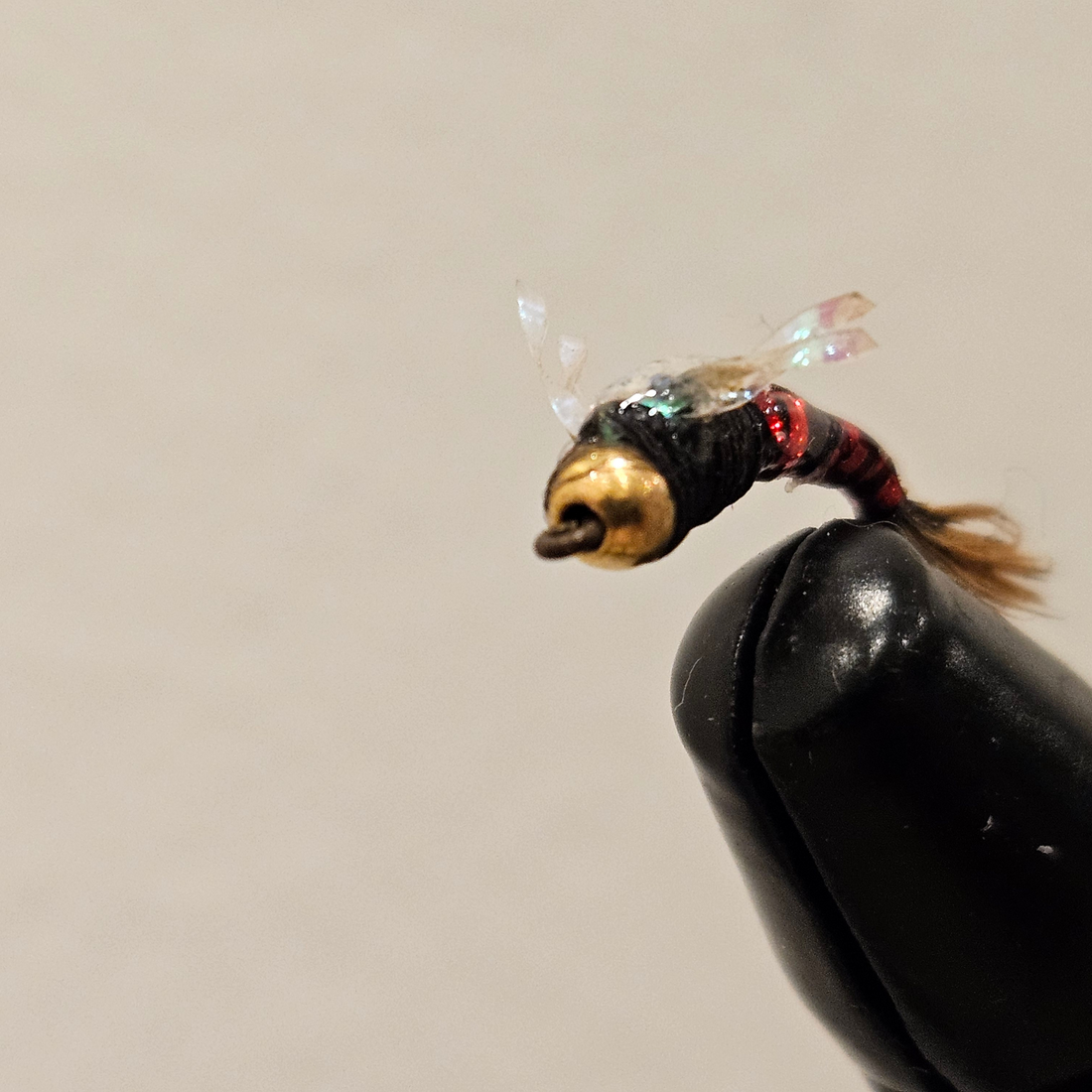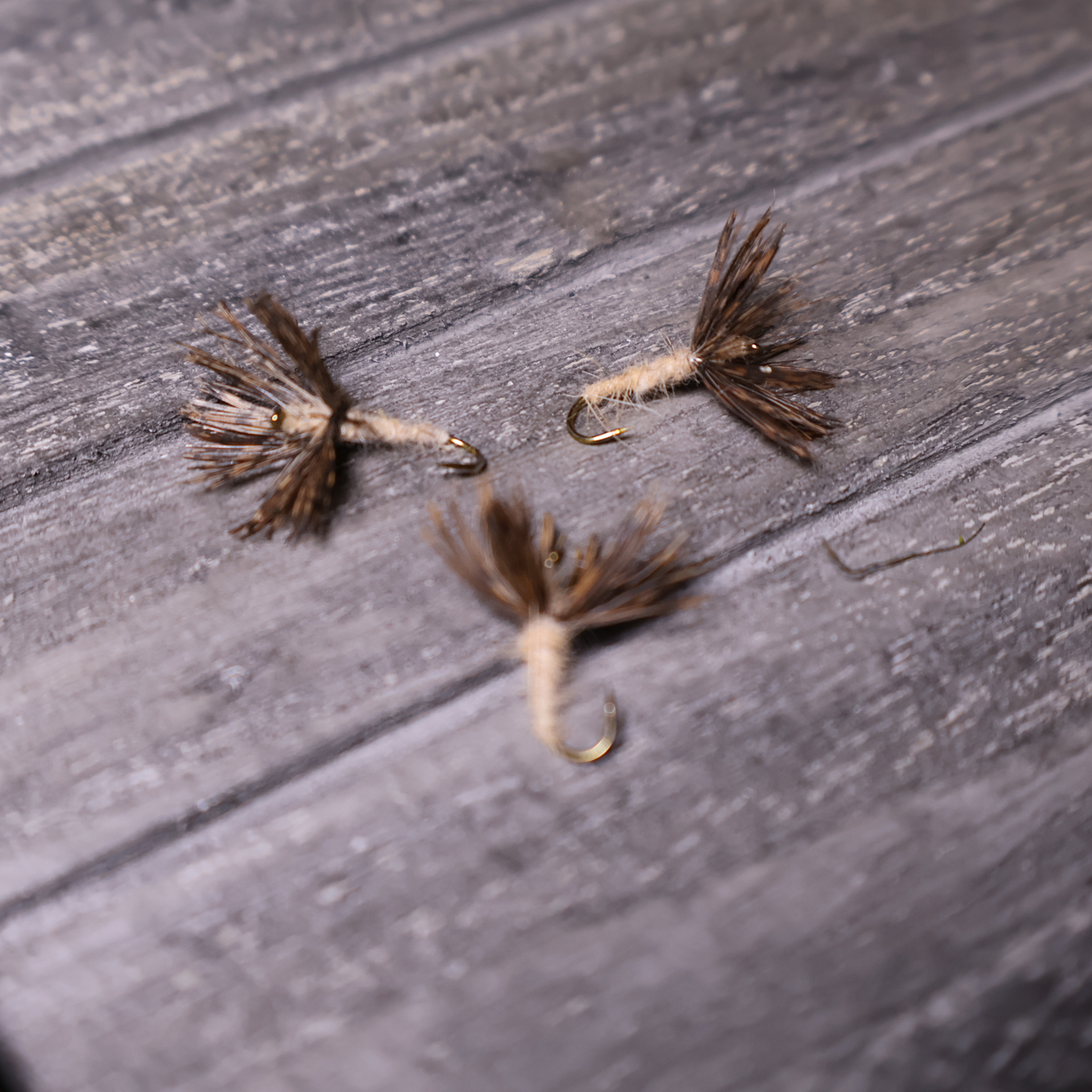The Juju Baetis Fly: A Versatile Weapon for Trout Anglers
Introduction
When it comes to fooling finicky trout, having the right fly in your box can make all the difference between a successful day on the water and a frustrating one. Enter the Juju Baetis fly – a versatile and effective pattern that has earned its place as a staple in the fly boxes of trout anglers worldwide. In this blog post, we'll explore the history of the Juju Baetis and delve into the various ways anglers can present it to tempt even the most selective trout. You can purchase our version of the Juju Baetis here.
The History of the Juju Baetis
The Juju Baetis fly traces its roots back to the creative mind of Charlie Craven, a renowned fly tyer based in Colorado. Inspired by the prolific hatches of Baetis mayflies on local waters, Craven set out to design a pattern that would accurately imitate the natural insect and consistently produce results on the river. The result was the Juju Baetis – a fly that combines simplicity, durability, and fish-catching effectiveness in equal measure.
Presenting the Juju Baetis
Like other nymphs like the bead head prince nymph, one of the key strengths of the Juju Baetis fly lies in its versatility. Depending on what trout are feeding on, such as emergers, nymphs, or duns, this fly can be adapted to imitate various stages of the Baetis mayfly lifecycle. Here are a few different ways anglers can present the Juju Baetis to entice trout:
- Dead Drift: The classic dead drift presentation is often the most effective way to fish the Juju Baetis, particularly when trout are feeding on nymphs near the bottom of the water column. Use a nymphing rig with split-shot or a weighted fly line to get the Juju Baetis down to the fish's level and drift it naturally with the current.
- Swing and Twitch: In faster riffles and runs, try imparting some movement to the Juju Baetis by employing a swing-and-twitch retrieve. Cast the fly slightly upstream and let it swing across the current, periodically adding small twitches to mimic the movement of an emerging mayfly struggling to reach the surface.
- Dry-Dropper Rig: When trout are actively feeding on or just below the surface, consider fishing the Juju Baetis as part of a dry-dropper rig. Tie a buoyant dry fly like a Parachute Adams or Elk Hair Caddis to your leader as an indicator, and trail the Juju Baetis behind it on a short dropper. This setup allows you to cover both surface and subsurface feeding zones simultaneously.
- Tandem Nymph Rig: Another effective presentation for the Juju Baetis is to fish it in tandem with a larger, heavier nymph such as a stonefly or caddis imitation. This setup not only increases your chances of enticing strikes from opportunistic trout but also helps to get the Juju Baetis down to the feeding zone quickly in deeper or faster water.
Conclusion
In a fly fishing world that is seemingly fixated on modernization, certain patterns can stand the test of time. Such patterns earn their place as go-to flies for anglers of all skill levels. The Juju Baetis is undoubtedly one such pattern – a versatile, dependable, and downright effective fly that consistently produces results on the water. Whether you're fishing a small mountain stream or a big western river, be sure to have a few Juju Baetis flies in your box – you never know when they might work their magic and fool a wary trout into taking the bait.



